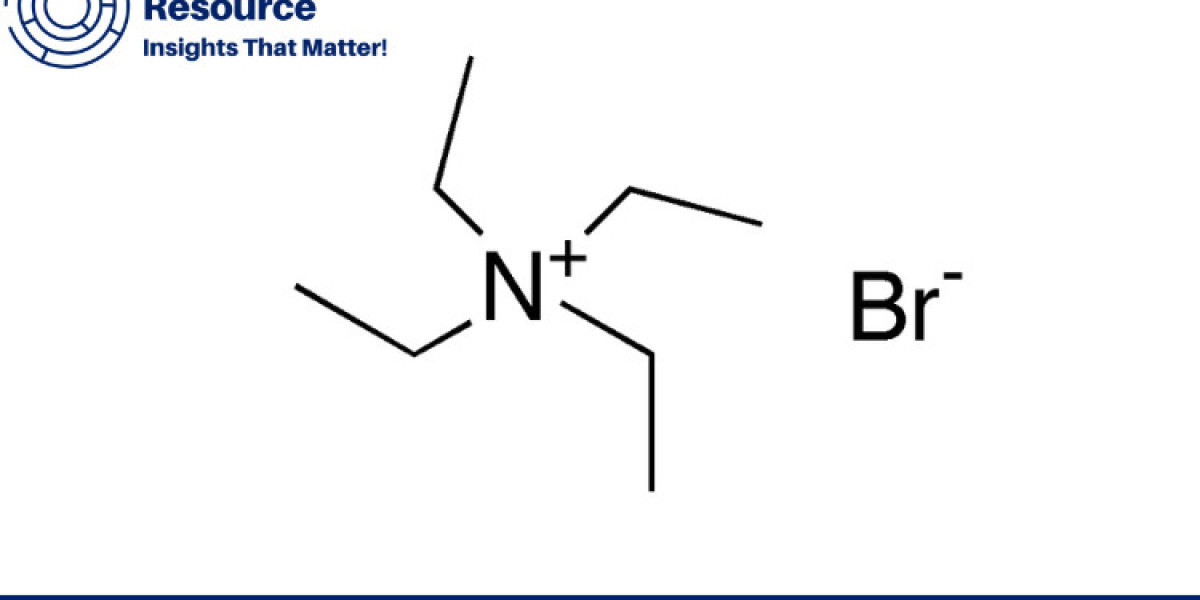Ammonium bromide, a key chemical compound used in various industries such as pharmaceuticals, photography, and water treatment, has seen fluctuations in its pricing due to shifts in market dynamics, raw material costs, and geopolitical factors. Tracking the Ammonium Bromide Price Trend is essential for businesses and stakeholders who rely on this compound for their production processes. This press release will explore the ammonium bromide price trend, in-depth analysis, historical price charts, news updates, price index, and graphical representations to provide a clear picture of its current and future market performance.
Request Free Sample – https://www.procurementresource.com/resource-center/ammonium-bromide-price-trends/pricerequest
Ammonium Bromide Price Trend: Key Factors Driving Price Movements
The Ammonium Bromide Price Trend has experienced notable fluctuations in recent years due to various factors. Ammonium bromide, used in a wide range of applications such as flame retardants, pharmaceuticals, and chemical synthesis, is influenced by raw material availability, global demand, environmental regulations, and geopolitical changes.
In 2023, the ammonium bromide price trend was marked by several key developments:
- Raw Material Costs: The production of ammonium bromide relies on raw materials like bromine and ammonia. The cost of bromine, which is typically extracted from seawater or underground brine, has been increasing due to rising energy costs and limited supply. Ammonia prices, on the other hand, are influenced by natural gas prices, which have seen volatility due to geopolitical tensions and supply chain disruptions.
- Global Demand for Pharmaceuticals and Flame Retardants: Ammonium bromide is widely used in pharmaceutical formulations and as a flame retardant in various industries, including textiles and construction. Growing demand in these sectors has contributed to an upward pressure on prices, particularly in regions with expanding industrial activity.
- Environmental Regulations: Stringent environmental regulations, particularly in Europe and North America, have impacted the production of chemicals like ammonium bromide. Compliance with these regulations often leads to higher production costs, which are passed on to consumers in the form of increased prices.
- Supply Chain Disruptions: Global supply chain disruptions, exacerbated by the COVID-19 pandemic, have affected the availability of raw materials and increased transportation costs, leading to price volatility for ammonium bromide in several regions.
Looking ahead to 2024, the Ammonium Bromide Price Trend is expected to remain dynamic, with prices potentially rising due to ongoing supply constraints, rising raw material costs, and growing demand from key industries. However, the expansion of production capacity in key regions and stabilization of supply chains could moderate price increases.
Ammonium Bromide Price Analysis: Breaking Down Key Market Influences
A detailed Ammonium Bromide Price Analysis sheds light on the complex market factors that influence pricing. These factors range from raw material availability to external market forces that impact supply and demand dynamics.
Raw Material Costs: Ammonium bromide production is heavily dependent on the availability of bromine and ammonia. Bromine is typically sourced from seawater or underground brine reserves, and its price is influenced by extraction costs, energy prices, and global supply-demand dynamics. Rising energy prices, particularly for natural gas and electricity, have pushed up the cost of bromine extraction, while natural gas prices have influenced ammonia production costs. As a result, any fluctuations in energy prices are directly reflected in the price of ammonium bromide.
Industrial Demand: Ammonium bromide is widely used in the pharmaceutical industry as a chemical intermediate and in flame retardants for plastics, textiles, and construction materials. The growing demand for flame retardants, driven by stricter fire safety regulations in construction and automotive sectors, has significantly contributed to price increases. In addition, the expansion of pharmaceutical production in developing markets has further driven demand for ammonium bromide.
Environmental Compliance Costs: The chemical industry is facing increasing pressure to comply with environmental regulations aimed at reducing pollution and greenhouse gas emissions. In regions like Europe and North America, stricter rules governing the production of chemicals, including ammonium bromide, have led to higher operational costs for manufacturers. These compliance costs are often passed on to end-users in the form of higher prices.
Geopolitical Tensions and Supply Chain Disruptions: The global chemical supply chain has been significantly impacted by geopolitical events, including the Russia-Ukraine war and trade tensions between major economies. These events have caused disruptions in the availability of raw materials, increased transportation costs, and led to price volatility for chemicals like ammonium bromide. Additionally, the ongoing recovery from the COVID-19 pandemic continues to affect global supply chains, contributing to price fluctuations.
The Ammonium Bromide Price Analysis highlights that raw material costs, growing industrial demand, environmental regulations, and supply chain disruptions are the primary factors driving price movements. These factors are expected to continue influencing prices in 2024, making it crucial for businesses to stay informed about market developments.
Ammonium Bromide Price Chart: Historical Price Movements
A Ammonium Bromide Price Chart provides a visual representation of historical price trends, allowing industry participants to track fluctuations over time and make data-driven decisions about procurement and inventory management.
2020-2023 Price Movements: The price of ammonium bromide has generally followed an upward trend over the past three years, driven by rising raw material costs, increasing industrial demand, and supply chain disruptions. In 2020, the onset of the COVID-19 pandemic caused significant disruptions in global supply chains, leading to price spikes as demand for pharmaceutical products surged. As economies recovered in 2021 and 2022, prices stabilized slightly but remained elevated due to continued supply chain challenges and rising energy costs. In 2023, prices increased again due to higher bromine and ammonia costs and growing demand from the pharmaceutical and flame retardant sectors.
Seasonal Variations: Prices for ammonium bromide can also exhibit seasonal variations, particularly in response to changes in demand from industries like agriculture and chemicals. For instance, prices may rise during periods of increased agricultural activity when ammonium bromide is used in pesticide formulations.
The Ammonium Bromide Price Chart is an essential tool for businesses seeking to monitor historical price trends and identify patterns that could inform future pricing strategies.
Ammonium Bromide Price News: Market Updates and Recent Developments
Staying up-to-date with the latest Ammonium Bromide Price News is crucial for businesses operating in industries that rely on this chemical compound. Market news provides valuable insights into factors influencing pricing, including changes in raw material costs, regulatory developments, and geopolitical events.
Expansion of Bromine Extraction Projects: In recent news, several major chemical companies have announced plans to expand their bromine extraction projects in response to growing global demand for bromine-based compounds, including ammonium bromide. These expansions are expected to alleviate some supply constraints and stabilize prices in the medium to long term.
Environmental Regulations Impacting Production: Recent regulatory developments, particularly in Europe and North America, have placed greater emphasis on reducing the environmental impact of chemical production. This has led to higher compliance costs for manufacturers, which are expected to result in price increases for ammonium bromide in these regions.
Rising Demand for Flame Retardants: The global demand for flame retardants has continued to grow, particularly in the construction and automotive industries. This rising demand has led to increased consumption of ammonium bromide, which is commonly used in flame retardant formulations. As a result, prices have risen in response to tightening supply and increased demand.
Geopolitical Tensions Affecting Supply Chains: Geopolitical tensions, particularly the ongoing conflict between Russia and Ukraine, have disrupted global supply chains, leading to increased transportation costs and delays in the delivery of raw materials. This has contributed to price volatility in the ammonium bromide market, particularly in regions dependent on imports.
By keeping up with the latest Ammonium Bromide Price News, businesses can stay informed about market developments and adjust their procurement strategies accordingly.
Ammonium Bromide Price Index: Tracking Market Performance
The Ammonium Bromide Price Index is a valuable tool for tracking overall price movements in the ammonium bromide market over time. By monitoring changes in the price index, businesses can assess market performance, compare price trends to other chemicals, and anticipate future price fluctuations.
2023 Index Performance: The Ammonium Bromide Price Index showed a steady increase throughout 2023, reflecting rising raw material costs, growing industrial demand, and ongoing supply chain disruptions. The index rose by approximately 6-9% over the year, with notable price spikes in regions experiencing supply shortages.
Outlook for 2024: The Ammonium Bromide Price Index is expected to continue rising in 2024, driven by sustained demand from the pharmaceutical and flame retardant sectors, rising bromine and ammonia costs, and environmental regulations impacting production. However, the rate of price increases may moderate as supply chains stabilize and new production capacity comes online.
The Ammonium Bromide Price Index provides businesses with a valuable benchmark for tracking price trends and comparing them to other key chemicals in the market.
Ammonium Bromide Price Graph: Visualizing Price Trends and Forecasts
A Ammonium Bromide Price Graph offers a graphical representation of price movements over time, providing stakeholders with a clear visual tool for analyzing historical data and predicting future trends. The price graph typically tracks price changes on a monthly or quarterly basis, allowing businesses to observe long-term trends and anticipate potential price fluctuations.
2020-2023 Price Graph: The Ammonium Bromide Price Graph for the past three years shows a clear upward trend, with prices rising steadily due to increasing demand from the pharmaceutical and flame retardant industries, rising raw material costs, and supply chain disruptions. The graph also highlights periods of volatility, such as the price spikes observed in early 2022 and mid-2023, driven by disruptions in global supply chains and rising bromine costs.
Forecast for 2024: The Ammonium Bromide Price Graph for 2024 is expected to show continued price growth, though at a more moderate pace as supply chains recover and production capacity expands. However, potential volatility in raw material prices and environmental regulations could lead to temporary price spikes.
About Us:
Procurement Resource is an invaluable partner for businesses seeking comprehensive market research and strategic insights across a spectrum of industries. With a repository of over 500 chemicals, commodities, and utilities, updated regularly, they offer a cost-effective solution for diverse procurement needs. Their team of seasoned analysts conducts thorough research, delivering clients with up-to-date market reports, cost models, price analysis, and category insights.
By tracking prices and production costs across various goods and commodities, Procurement Resource ensures clients receive the latest and most reliable data. Collaborating with procurement teams across industries, they provide real-time facts and pioneering practices to streamline procurement processes and enable informed decision-making. Procurement Resource empowers clients to navigate complex supply chains, understand industry trends, and develop strategies for sustainable growth.
Contact Us:
Company Name: Procurement Resource
Contact Person: Amanda Williams
Email: sales@procurementresource.com
Toll-Free Number: USA Canada – Phone no: +1 307 363 1045 | UK – Phone no: +44 7537 132103 | Asia-Pacific (APAC) – Phone no: +91 1203185500
Address: 30 North Gould Street, Sheridan, WY 82801, USA







